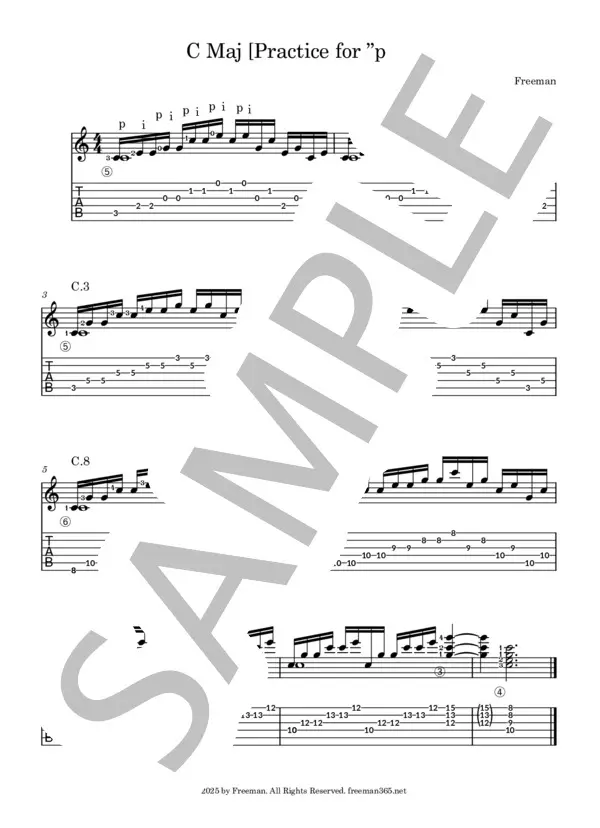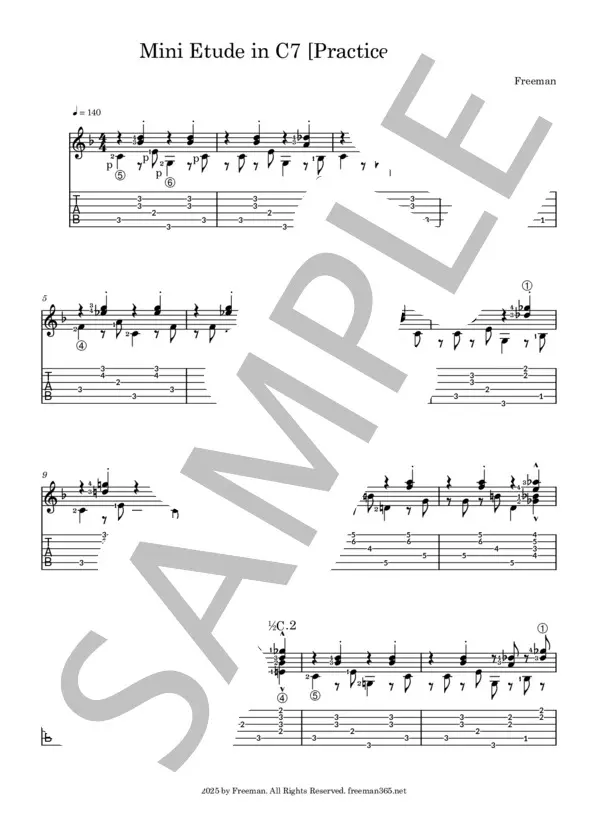Hello, this is Freeman.
The classical guitar has long captivated music lovers with its beautiful tone and expressive power.
But playing it is far from easy—it’s often considered one of the more difficult instruments to master.
Beginners, or even musicians who already play other instruments, frequently run into its unique challenges.
In this article, I’ll break down the technical difficulties behind classical guitar, along with the deep rewards and beauty that come from overcoming them.

I myself switched from electric guitar to classical guitar.
I remember very clearly how frustrated I was in the beginning—I could hardly play at all.
But the illusion that one guitar could sound almost like a piano kept me going.
And honestly, when you’re struggling with something tough, doesn’t it feel a little good to “get lost in it” for a moment?
Later in this article, you’ll find an etude that transforms “practice = boring” into a fun and effective way to strengthen both hands.
The Right Hand: Complex Fingerings and Tone Control
Unlike electric guitar, where you use a pick, classical guitar requires plucking with your fingers.
This means your right hand’s movements directly shape the sound.
Techniques like arpeggios and tremolo demand that each finger move independently, and achieving smooth execution requires long, consistent training.
Nails also play a huge role in tone.
Their shape, length, and the angle of attack all influence sound.
Finding your ideal tone involves constant fine-tuning and experience.
Tone control is one of the greatest challenges of classical guitar, but also one of the keys to expressing individuality.
The Left Hand: Fingerings and Position Shifts
Classical guitar pieces often contain complex chords and scales.
Playing them cleanly demands independence and flexibility of the left-hand fingers.
Like fast playing on electric guitar, classical guitar requires quick and accurate position changes.
The difference is that on an unamplified nylon-string guitar, clarity depends entirely on your technique.
Shifting smoothly without breaking the sound is a high-level skill.
Interestingly, many notes can be played in multiple positions.
Choosing the right one affects the musical interpretation itself. What may seem like freedom actually demands deep knowledge and experience.
This choice of fingering is part of what defines a player’s individuality and interpretation of the music.
Interpreting Complex Scores and Building Expression
Classical guitar scores are often very complex compared to other instruments.
Polyphonic (multi-voice) works are common, where melody, accompaniment, and bass lines must be played simultaneously on a single guitar.
Polyphony: Music in which two or more melodic lines progress independently at the same time.
Balancing these voices requires excellent sight-reading and finger control.
On top of that, musical interpretation greatly impacts performance.
Even with the same score, two players can create completely different interpretations.
This freedom is part of the guitar’s appeal—but it also requires a high level of creativity and expressiveness from the performer.
Instrument Characteristics and Adapting to the Environment
Classical guitars use nylon strings, producing warm tones but shorter sustain compared to steel strings.
Slight changes in touch or force create noticeable differences in sound, requiring delicate
Classical guitars are relatively quiet instruments.
Without amplification, the performer must control volume and balance directly.
Especially in solo settings, this makes technical refinement essential.
I’ve touched on the topic of producing sound on the classical guitar before, so you may find it helpful to check that out.
↓
Beyond the Challenges: The Unique Rewards
As we’ve seen, classical guitar presents many obstacles.
But beyond them lies a richness and beauty found in no other instrument.
- The ability to express both melody and harmony on a single instrument
- A warm, nuanced tone that conveys deep emotion
- A wide repertoire spanning centuries, from early music to contemporary works
Through classical guitar, you can explore countless musical worlds, deepening both technique and artistry.
Conclusion
Thank you for reading.
The difficulty of classical guitar arises from many intertwined factors:
- Demanding right- and left-hand techniques
- Complex score interpretation
- Expressive nuance and tone control
- Understanding the instrument’s unique characteristics
Yet when these challenges are overcome, the sense of accomplishment and the ability to convey rich expression make the instrument truly special.
Exploring classical guitar can elevate your skills, expand your musical horizons, and provide a deeply rewarding artistic journey.
🎵 Next Step: A Practical Etude for Training Both Hands Efficiently
To help you apply the “practice methods for breaking through skill plateaus” discussed here,
I composed a mini etude designed to efficiently balance both right and left hands.
It’s a guitar-like, musical exercise that improves finger independence and sense of rhythm at the same time.




🎼 Get the practice set here (same sheet music on all sites):
👉 [View on Gumroad]
You can get the set at a special bundle price (about 11% off) compared to individual purchases.
This etude will change how you think about practice —
a musical, hands-on training piece that keeps both your hands and your mind engaged.
If you’d like, please stop by my YouTube channel—I’d love to share this journey with you!


